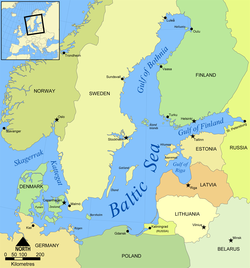This article needs additional citations for verification .(July 2012) |
Bodies of water of brackish nature are found around the world in a wide variety of settings, shapes and sizes. The following is a list of notable bodies of brackish water.
This article needs additional citations for verification .(July 2012) |
Bodies of water of brackish nature are found around the world in a wide variety of settings, shapes and sizes. The following is a list of notable bodies of brackish water.


{{cite web}}: CS1 maint: archived copy as title (link){{cite web}}: CS1 maint: archived copy as title (link)